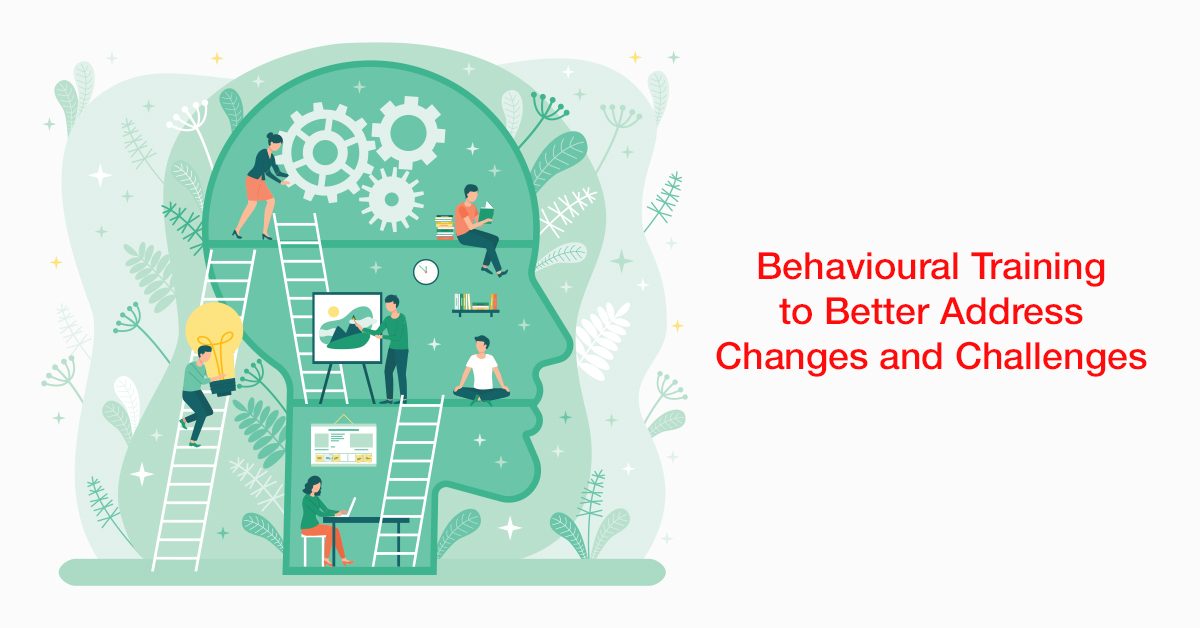
Learning Principles to Aid With Your eLearning Implementation
Learning is an Active Process. You Can’t Expect Instant Results.
Learning is an active process which cannot end with the learners going through the course material once. Even with the learner going through the course, it is important that they do not simply mug up. Rather they actively learn to understand the subject and use it to solve real world problems. Also, learning must perpetually go on till the learners completely understand the subject at hand. L&D teams must ensure that sufficient training is rolled out on a timely basis to ensure that this training function does not pause midway.
Finally, with training, you can never really expect a group of learners to display the same levels of retention and application. As learners and their ability to learn differ, so does their ability to apply and retain this training.
Overloading Learners Will Not Help the Cause.
Yes, we have unlimited access to information covering almost all subjects in the world. But that does not mean you flood your learners with all of this information because you can.
Cognitive Overload is the phenomenon of overloading learners with too much information.
Remember that learners have finite amounts of attention spans and memory space. Only allotting it to learning and retaining a topic. Retention rates drop with an increase in complexity.
When building your training, always keep the microlearning principles of ‘less is more’ in mind. It’s the principle which states that microlearning is not about what you include in the course. It is about what you exclude.
You want to let your learners to wisely use most of their available attention spans.
Blend Learning Methodologies for a Balanced Approach.
Blending learning is important because you’re working with a group of learners displaying varying needs. Some learners may prefer in-person training while others may prefer self-paced training. The only solution here is to hear your learners out before building your training program. And try your best to include the best of both worlds.
One way to determine which portions of your training can be moved online and what stays with a trainer is quite straightforward. Tough topics which require learners to ask multiple questions or topics that work on experience sharing of the trainers can be conducted in person – for obvious reasons. Like the ability for learners to directly interact with the trainers and solve their doubts.
On the other hand, assessments, complex explanations, workplace training and coaching, software training, and topics which involve technicalities and extensive visualization of the subject matter are best served in the form of eLearning.
You have a myriad of options like simulations, videos, role-play, scenario-based training and so much more to get this message across.
Reward Successful Attempts and Correct Failure.
Why do the L&D teams conduct training? L&D professionals conduct training in a bid to upskill their learners so that productivity increases and employees are upskilled to take on greater positions. However, why do employees train?
Well, employees train for three reasons:
- Learn new skills that can help them unlock better opportunities
- Solve their current work-related problems
- Get noticed by employers
Well, many employees equate training and development to them showing their employers that they are ready to learn, develop, and take on more. And rightfully, this is very true, and no employers or trainer must ever forget it.
More than the ability of a learners to grasp a topic, it is important for the L&D team to notice the efforts that a learner has put in to complete a training course.
As a result, you need to reward learners for taking the time and putting the efforts. Into engaging with and successfully completing your training program. That is the only way you send a clear message. A message to the rest of the organization about the benefits or advantages of learning and developing one’s skills.
On the other hand, unsuccessful attempts are an indication of an issue. Either at your or the learner’s end and means it’s up to the L&D team to look for the appropriate changes.
Gamify Training to Peak Enrollment Rates.
Sometimes your training is very useful but learners do not know this. This happens because they have not yet enrolled in the training. So what can you do to get such learners going?
You may sometimes realize that getting the learner to simply view the course once is all it takes to get them engaged. Why? Because they realize that the course is indeed very useful to them, and completing it is only beneficial. Which is why getting them to enroll and view the course is very important.
By gamifying your training, you are giving your learners a reason to enroll in and view the course at the least. Even if its out of sheer curiosity, it promotes your course to the right audience which is very important. Moreover, if the gamification mechanics are tied in well to the complete training experience and is relevant to what is being taught, it only makes the whole experience more enjoyable.
How Can We Help With eLearning Implementation at Your Workplace?
We at eNyota Learning have been assisting organizations build the most optimal type of eLearning based on learning principles to directly aid with eLearning implementation and their business needs. It starts with us understanding the various eLearning design principles and elements that makes a course work, and those that totally fail the agenda. We have over 15 years of experience so we ensure that our projects follow the best design principles.
If you’re interested in building a course and are looking for professional assistance with eLearning implementation at your workplace, feel free to reach out to us at contact@enyotalearning.com or fill this form.
We also assist organizations with learning technologies such as the Abara LMS. Contact us to know more about that as well.



